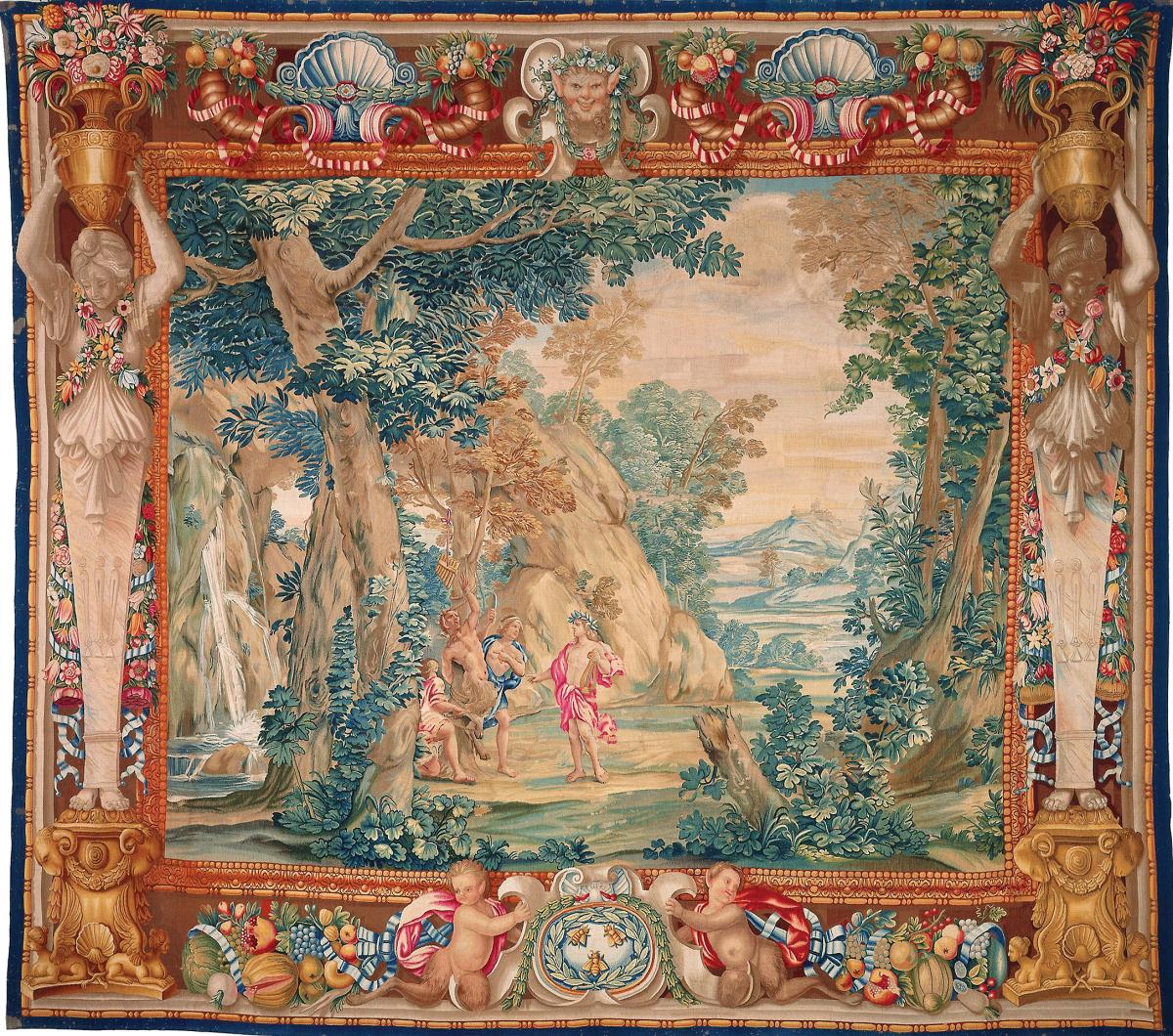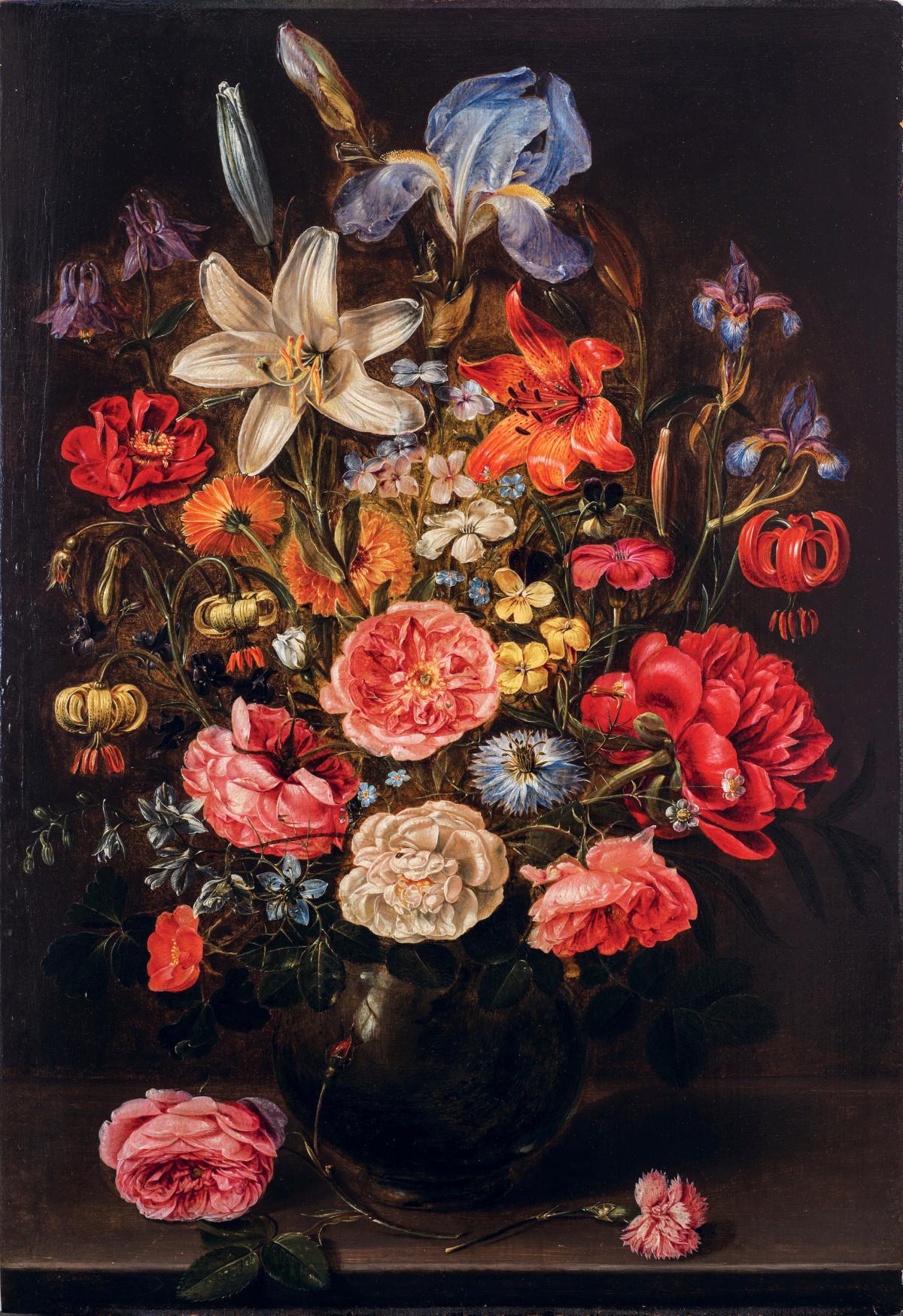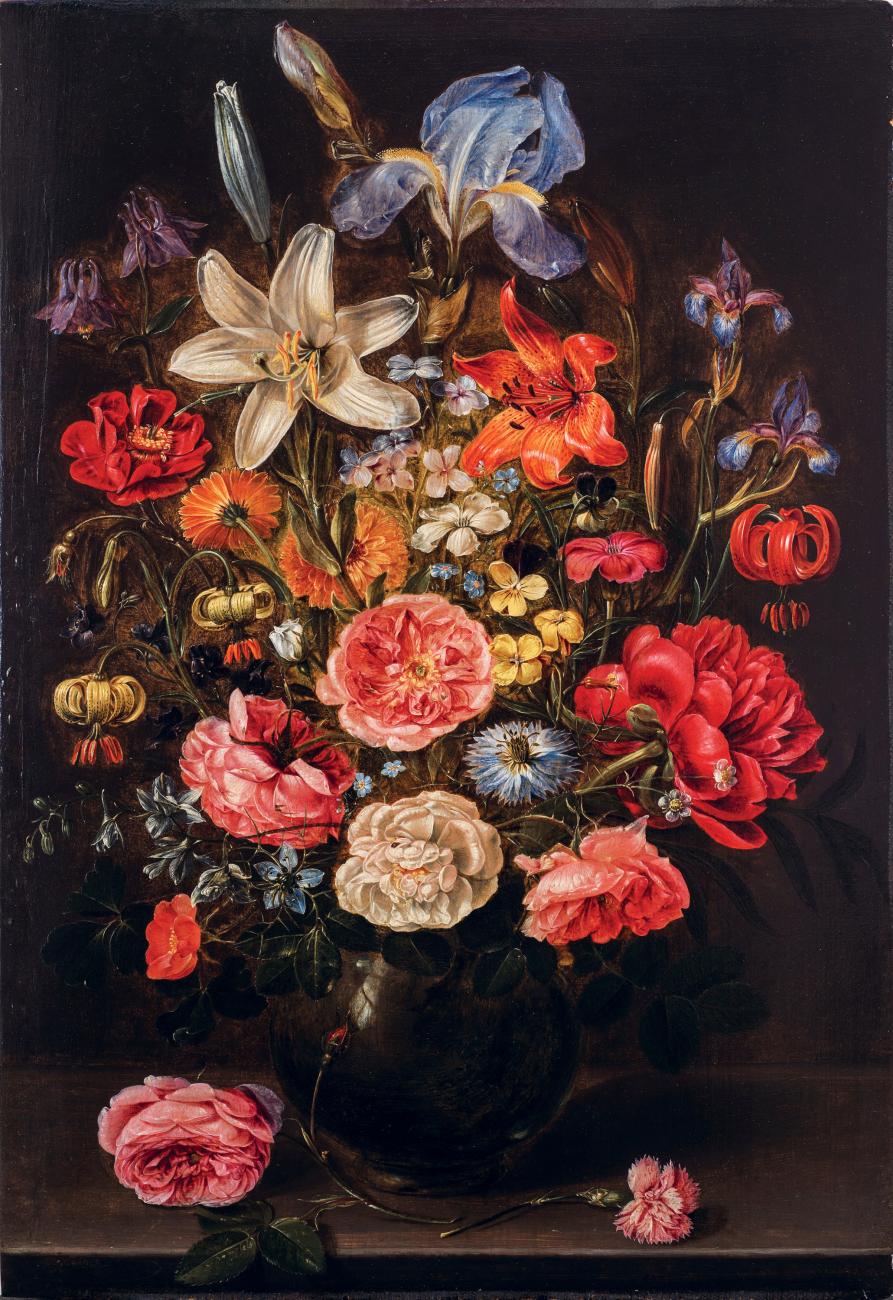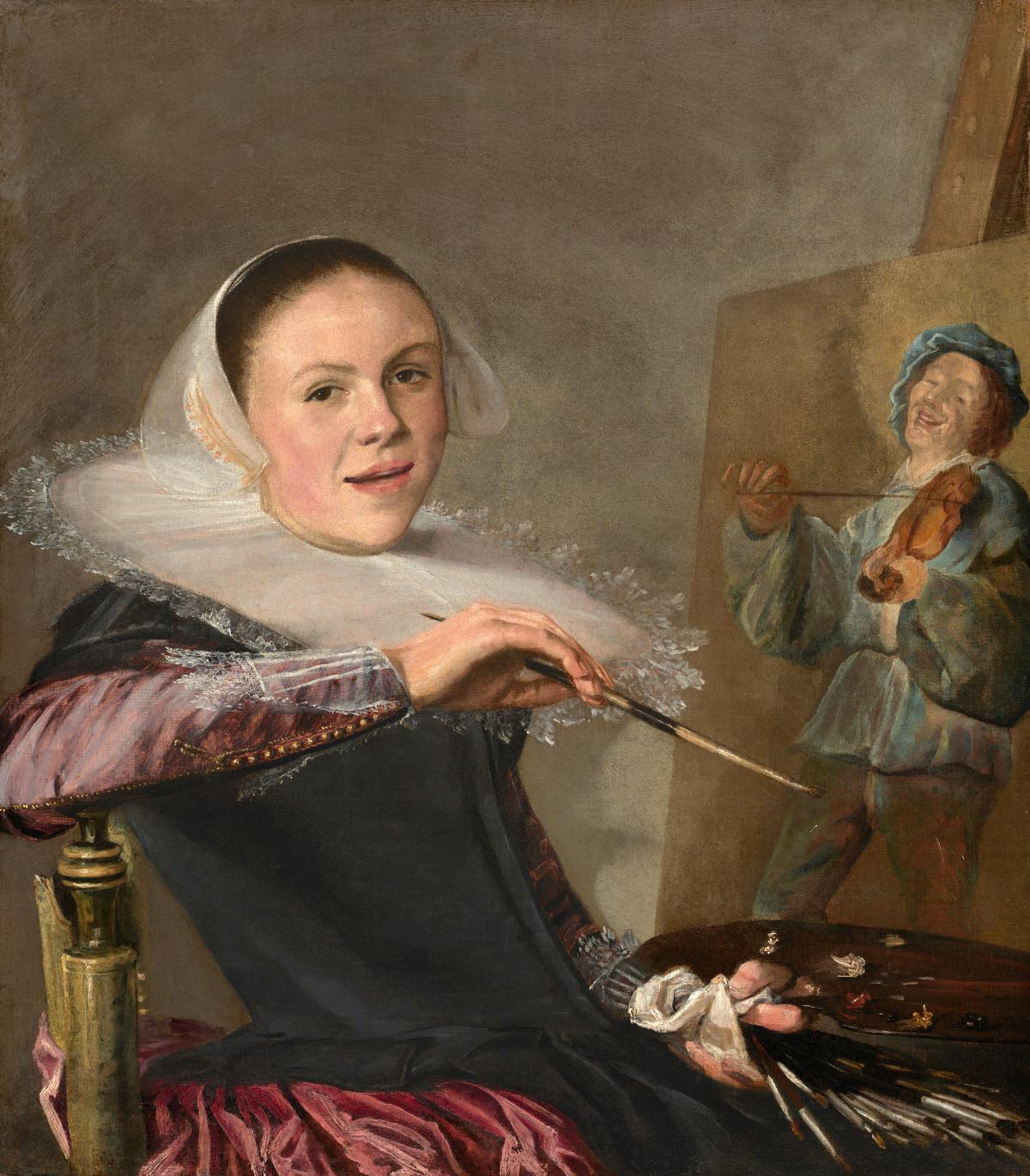There’s nothing sentimental about “Making Her Mark,” a survey of women artists in Europe from the fifteenth through the eighteenth century at the Baltimore Museum of Art. Arrayed in jewel-toned galleries are scenes alternately jolting and stunning: some of beheadings and gods skinned alive, others of cherry-red peonies and artists lounging at their easels, all a reminder that if the best art is born of close looking, these women didn’t blink.
Among the keenest observers in the show is the Venetian painter Giulia Lama. Her drawings of male nudes, three on view midway through the exhibition, feature a central figure in red chalk, flanked by two in black. The twisted forms reveal taut musculatures, sinews of flesh suggested with deep shadows and whispers of white falling down the spine.
Lama’s work astounds, not least because when she completed it, in the first half of the eighteenth century, women in Europe weren’t officially allowed to draw from live, unclothed male models. “Women found ways around these strictures,” says Andaleeb Badiee Banta, of the Baltimore Museum of Art, who co-curated the show with Alexa Greist of the Art Gallery of Ontario. “They always do.” The artists used prints, sculptures, even family members, as guides, Greist insists: “You can’t forbid women from seeing.”
What they saw were scenes of valor, or hubris, as in the show’s opening, blood-red, room. There, a sprawling tapestry of saffron-yellow tulips and powder-blue grapes reveals a man tied to a tree. He is Marsyas, we learn in the wall text, a woodland god in Greek mythology who challenged Apollo to a musical contest and, having lost, was skinned alive. The tapestry, made under the direction of the Flemish weaver Maria Maddalena della Riviera, is a striking introduction to the show: Venture on, it urges, but watch your step.
Equally unnerving is Artemisia Gentileschi’s Judith and Her Maidservant with the Head of Holofernes, mounted on a nearby wall. The picture is Gentileschi’s third on the theme: one depicts the heroine driving her sword into the tyrant Holofernes’s neck; another shows Judith and her maid smuggling away the severed head. In the show’s high-keyed work, a crimson curtain is pulled back—in the manner of her predecessor, Caravaggio—to reveal Judith and her accomplice, hiding the evidence, already a putrefying green. Out of frame is a noise, an intruder, perhaps. All we see of the exchange is Judith, her hand poised in midair, a reminder to keep quiet. The low light catches her canary-yellow dress and the rusted lavender of her maid’s. A crescent-edge shadow falls on Judith’s face, at once emerging from and receding into the darkness. There’s a strained air about the picture, like a glass on the edge of a table: One wrong move and it will shatter.
“If you know a woman artist from premodern Europe, it would be Gentileschi,” Banta says of the painter. Born in Rome in 1593, Gentileschi was an accomplished artist by fifteen, following in the tradition of her father, the noted painter Orazio Gentileschi. In 1611, she was raped by the artist Agostino Tassi, who was convicted but never served his sentence. After an excruciating court trial, in which she was tortured to verify her testimony, Gentileschi forged ahead, establishing herself across Italy and the continent for the marvelous play of light in her canvases. She held Judith in high regard. As Gentileschi wrote to her patron Don Antonio Ruffo: “You will find [in Judith] the spirit of Caesar in the soul of a woman.”
That spirit carries over to Luisa Roldán’s terracotta heads of John the Baptist and the Apostle Paul, displayed alongside Gentileschi’s Judith in the show. The severed heads, silhouetted against a gold charger overlaid with rippling della Robbia blues, seem to cry out, their soundless call echoing through the gallery. In an adjoining room, Roldán’s painted wood sculpture The Education of the Virgin appears quaint by comparison. There, the Madonna and her mother, St. Anne, read side by side, the pistachio and emerald greens of Anne’s shawl set vividly against the scarlet and gold of her chair. The figures are quiet, deceptively so, as if your presence might break their spell. Roldán, the first woman court sculptor in Madrid, painted with an unflinching precision, each brushstroke sounding a haunting note.
No less precise is the Elizabethan nightcap in a nearby room. The gorgeously patterned head covering, dated to 1580, is attributed to an unnamed woman or girl, who likely made the cap for a man in her family. The work is a marvel: A lattice of gold tendrils, apricot blossoms, and sage-green leaves punctuated by darkened spangles stitched in fire-red thread: The artist surely delighted in every twist and turn.
The nightcap, as with so many works in the show, brings to the fore women artists whose names were never recorded but whose work, dazzling and finely rendered, lives on. “We wanted to illustrate all the silent labor,” says Banta, “the presence of absence.”
Better known is Clara Peeters, a seventeenth-century Flemish painter whose still life in the show sparkles, the pitch-black canvas teeming with cerise peonies, velvet-white roses, and periwinkle-blue irises. In the galleries, the lavish work is paired with other floral marvels in a great profusion of electric blues, tangerines, and purple-streaked scarlet blossoms, brimming with alacrity.
Another masterful colorist is Sarah Stone, whose blue-and-yellow macaw, of 1789, is mounted nearby. As a teenager, the British Stone was commissioned to document birds collected from as far as Australia and the Pacific. Her macaw is especially winning, its amber-yellow plumage giving way to aquamarine wings.
Nearly a century earlier, the German naturalist Maria Sibylla Merian traveled from Amsterdam to Suriname in South America on a self-financed voyage, seven years after her husband divorced her, to illustrate new species of plants and insects—images the Swedish biologist Carl Linnaeus would consult over actual specimens. At thirteen, Merian began raising caterpillars in her home. In the Baltimore show, her illustration of a hawk moth charms, drawing out the subtleties of the dotted, slate-brown caterpillar. She studied moths “in an attentive, almost political way,” Banta says.
Nearby in the show is the work of the seventeenth-century German astronomer Maria Clara Eimmart, who, at seventeen, began studying the phases of the moon and wonders of the night sky, completing more than 350 drawings, four from the late seventeenth century on view in the exhibition. The celestial bodies of silvery sand-beige sparkle against a twilight blue ground. Like her peers, Eimmart’s curiosity knew no bounds.
The Dutch polymath Anna Maria van Schurman had a similar gusto. The first female student admitted to the university at Utrecht, in 1636, van Schurman was a noted scholar. Her minute self-portrait, an etching, reveals a young woman in a lace collar and brocaded dress, its flourishes echoing the tight curls of her mop-like hair. Only her sideways glance gives her away: She sees something we don’t, just out of view.
“For a woman to put herself out there, in front,” Greist says, “that is very interesting.” Van Schurman gave the etching as a gift to the Dutch poet and composer Constantijn Huygens, but she might have given away others. That idea, of portraits trading hands, raises important questions, Greist continues. Among them, How does one present herself to the world?
In her treatise, The Learned Maid; Or, Whether a Maid May be a Scholar? A Logick Exercise, of 1659, also on view in the exhibition, van Schurman presents herself as a learned woman, one who sees the value of education in service of the spiritual life. But she was no feminist, Greist asserts: “She was in favor of women’s education, as long as it didn’t interfere with their housework.”
Judith Leyster’s self-portrait, on display in one of the final rooms of the show, is comparably pointed. Leyster, one of two women admitted to Haarlem’s painters’ guild in the seventeenth century, started her own studio at twenty-four. In the exhibition, the artist is seated at her easel, dressed to the nines in a cranberry-red satin skirt and stiff lace collar. This is Leyster not as she is—these aren’t the clothes of a working artist—but as she imagines herself to be. She has about her an airy nonchalance, shoulders rounded, mouth slightly parted, the first hint of a smile breaking through.
In her self-portrait, Leyster is painting a fiddler, a reference, perhaps, to her work Merry Company of similarly spirited musicians or to a Dutch proverb that translates to “The more a painter he becomes, the wilder he gets.”
There’s a wild streak about the American sculptor Patience Lovell Wright, whose wax portrait of George Washington is on view in the galleries. As the story goes, Wright worked as a spy in London, hiding messages in her sculptures, which she sent back to relatives in the colonies. Wright corresponded with Benjamin Franklin and George Washington, among others. In 1785, Washington wrote to her: “If your inclination to return to this Country should overcome other considerations, you will, no doubt, meet a welcome reception.” Hers, he continued, were “rare & uncommon gifts.”
The gifted French painter Anne Guéret is a fitting encapsulation of the show. Her drawing of an artist, possibly a self-portrait, depicts a young woman spotlit against a muddy gray ground. Her dress, of white muslin, falls in rich, striated folds, a glint of light suggested on the tip of her nose and corners of her mouth. She is holding a portfolio, the outline of a male nude visible. But something out of frame has caught her attention. The world, for a moment, is boundless.
The Venetian painter Giulia Lama, whose sinuous male figures punctuate the show, was also a writer. In her eulogy for the poet Antonio Sforza, she rages at the quick claws of death, which have “turned him away before his time.” But Lama sees in Sforza’s writing a faint light: “Despite bitter and wicked hatred / He lives again for us on paper.”
The artists in “Making Her Mark” held nothing back. In finely wrought tapestries, sumptuous oils, and intricate drawings, they tell a different story. They live again for us.
















